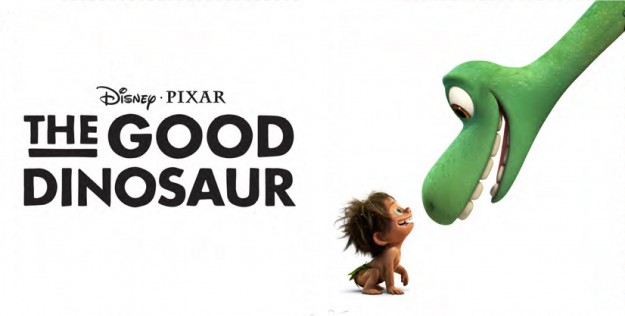
I have to reach every demographic, so sue me.
I have been a fan of Pixar for as long as I can remember. Although they are primarily aimed at children, the films have a great mixture of amazing technical skill and simplistic, but engaging storytelling. I was surprised to see that The Good Dinosaur was coming to theaters with an intriguing premise: What if the dinosaurs never went extinct? What I expected was a mythology about how the world might be different. What I got was a deep allegory about what it means to deal with the struggles of life and make your mark on the world.
The Plot
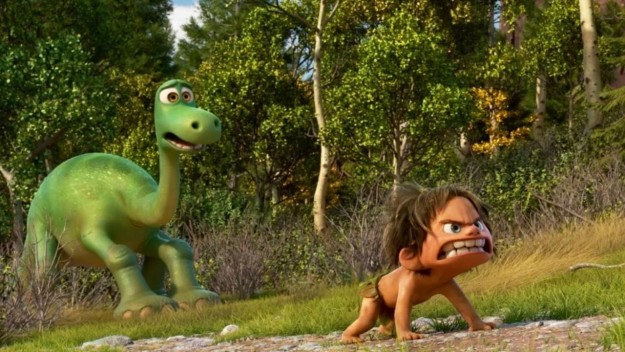
It’s odd how they could make a human into a dog-like character and have it work.
Arlo (Raymond Ochoa) is an Apatosaurus that lives on a corn farm with his family. Unlike his siblings, he is somewhat of a coward and is constantly afraid of things, which creates a sense of constant disappointment in himself and worries in his parents. After his father, Henry (Jeffrey Wright), pushes him to hunt a caveboy named Spot (Jack Bright) that has been eating all of their corn, Arlo is thrown into the wild and must struggle to survive and make it home.
If you take it at face value, this is a pretty simplistic plot, but there is a lot more to it than that. Why? I’ll show you why when we talk about the themes later on.
The Characters
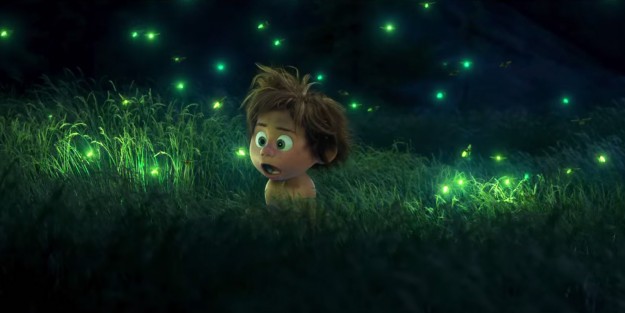
Aside from the characters, this has to be Pixar’s most photo-realistic film yet.
No one really phones it in here, but one of the more interesting creative choices in this movie is that it is carried almost entirely by Raymond Ochoa’s performance. Pixar took a pretty big risk with a teen actor and it paid off brilliantly, which is a testament to how good he is. The rest of the cast does a great job, too, although there is not a lot of character development for them other than their job and some basic information.
However, there are surprise cameos by Anna Paquin and Sam Elliott that add a little bit of depth to the cast. Although they are mainly there to offer exposition on how this society works, it also points out a simple idea of how to deal with people. Arlo learns how to fight for himself and for others in this case, which is the start of his path to becoming a better dinosaur.
The Themes
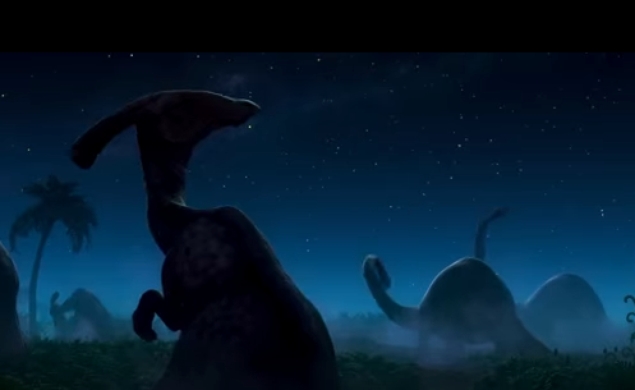
What? What Happened?
Much of this film is centered around how Arlo struggles to make his mark on the world, which is emphasized by a footprint on the stones of the family’s corn silo. The mark comes easily to his siblings, who do it by accomplishing the basic tasks of running a farm, but Arlo is crippled by fear and cowardice. However, one thing I quickly gathered from the movie was this:
Aside from his parents, Arlo was the only one who actually earned it.
If you think about it for a second, the mother and father built everything that the kids would grow up in, so they get it for the effort of building a civilization. However, the siblings get it just by accomplishing basic tasks that don’t involve feeding animals that attack you or trapping potentially threatening “critters”. Now, some might think that his parents push him too hard, but the film makes a point that parents do that sometimes because they want the kid to surpass them. It just took Arlo more time.
There is also a little bit of a warning that I found particularly interesting, especially since it was emphasized by hostile pterodactyls. When they attacked Arlo and Spot, the flyers spoke in such a way that reminded me a little bit of extremist groups, particularly if they are of the religious variety. That may or may not have been Pixar’s intent, but I think it serves as a reminder that falling in with the wrong crowd will doom you, especially if you feel that you have lost your way.
The Downsides
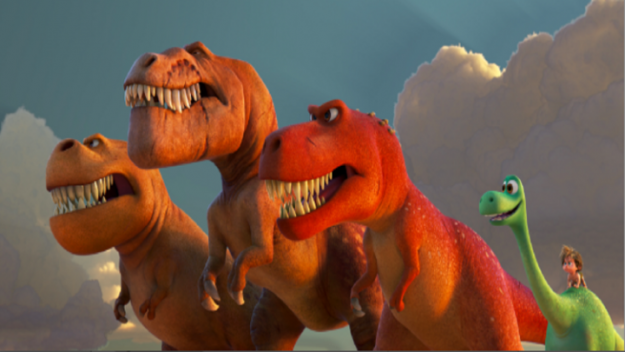
In before hate mail!
There are a few pieces that could have been cut from this film without sacrificing quality, mainly around the time that Arlo gets lost. This may seem like nitpicking because the film was very entertaining and well done, but it could have been trimmed a little bit more without sacrificing much at all.
The only other thing that some people might notice is that there is a character death that plays out almost exactly like The Lion King, albeit with a few variations. The issue is that it didn’t tie into the story outside of giving Arlo and his family a reason to feel something. With that said, I don’t mind the idea of paying homage when it is used sparingly, but you might, dear reader.
Sanjay’s Super Team
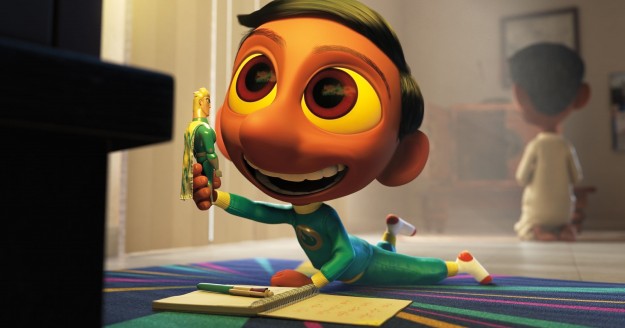
A very interesting idea.
Like every Pixar movie, the movie includes a short film called Sanjay’s Super Team that opens before the movie starts. Although I was initially scratching my head as to why Pixar made this choice for a worldwide audience, I thought that the story was kind of interesting because it grapples with the issues of traditionalism and modernity.
The story is supposedly (mostly) based on true events and deals with Sanjay and his father as they are in a hotel room. While the father wants to meditate with the Hindu gods, Sanjay loves video games, superheroes, and cartoons. Eventually, his father pushes him to sit with him in his observance, but Sanjay gets a little irritated to his parent’s dismay. He does demonstrate that he understands his father, though, by connecting his superheroes with the gods. It’s interesting to see it as a love letter to Sanjay’s parents, but also as a way of showing how a lot of the superhero myths that we know could have been inspired by older stories of religious and cultural significance.
Conclusion
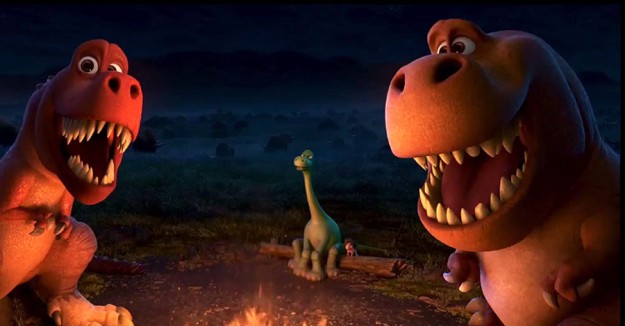
Who knew that a T-Rex could add some western flair?
The Good Dinosaur is an engaging flick that will keep you engaged from beginning to end, whether you are watching it with a kid or not. Sanjay’s Super Team adds onto the fun with an interesting idea and the love between a father and son. Long story short, Pixar has done it again and I expect this movie to do very well in the box office… at least until December 18th.
No Comments Yet